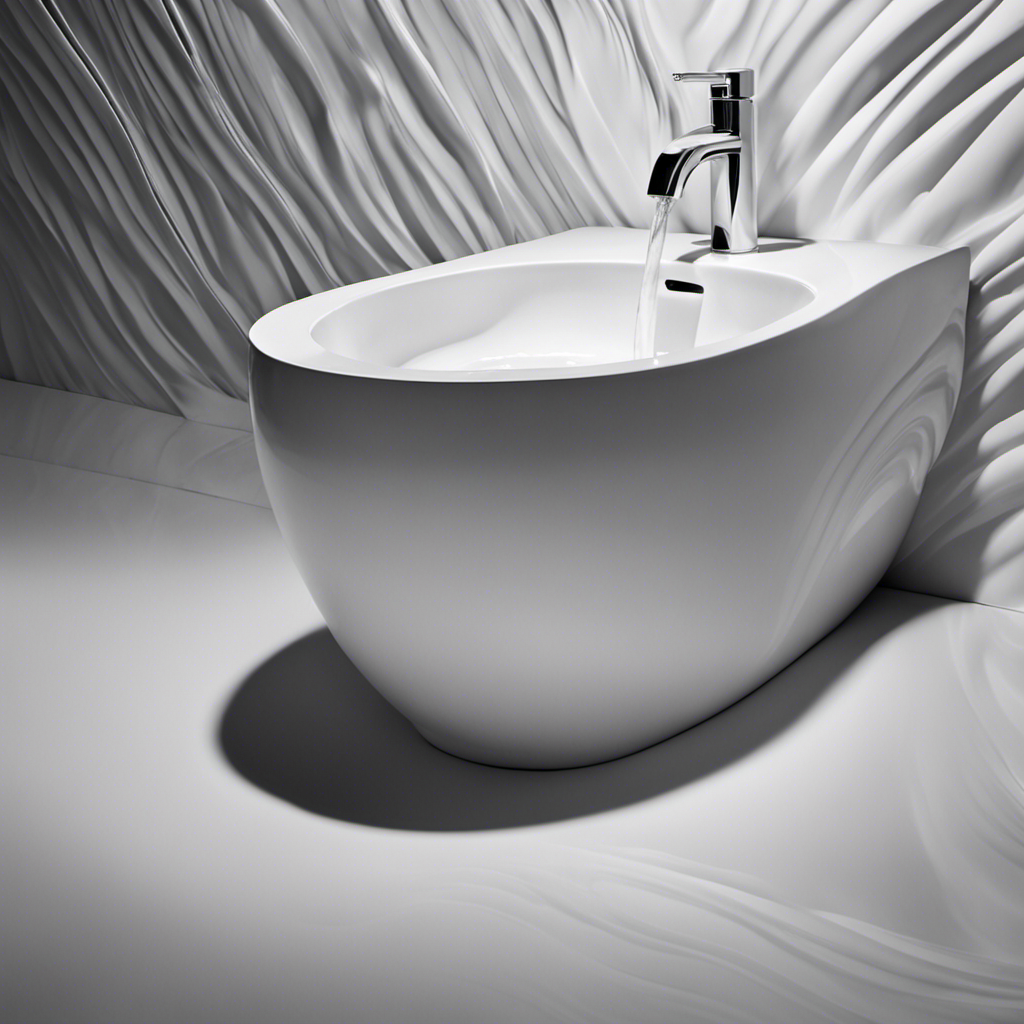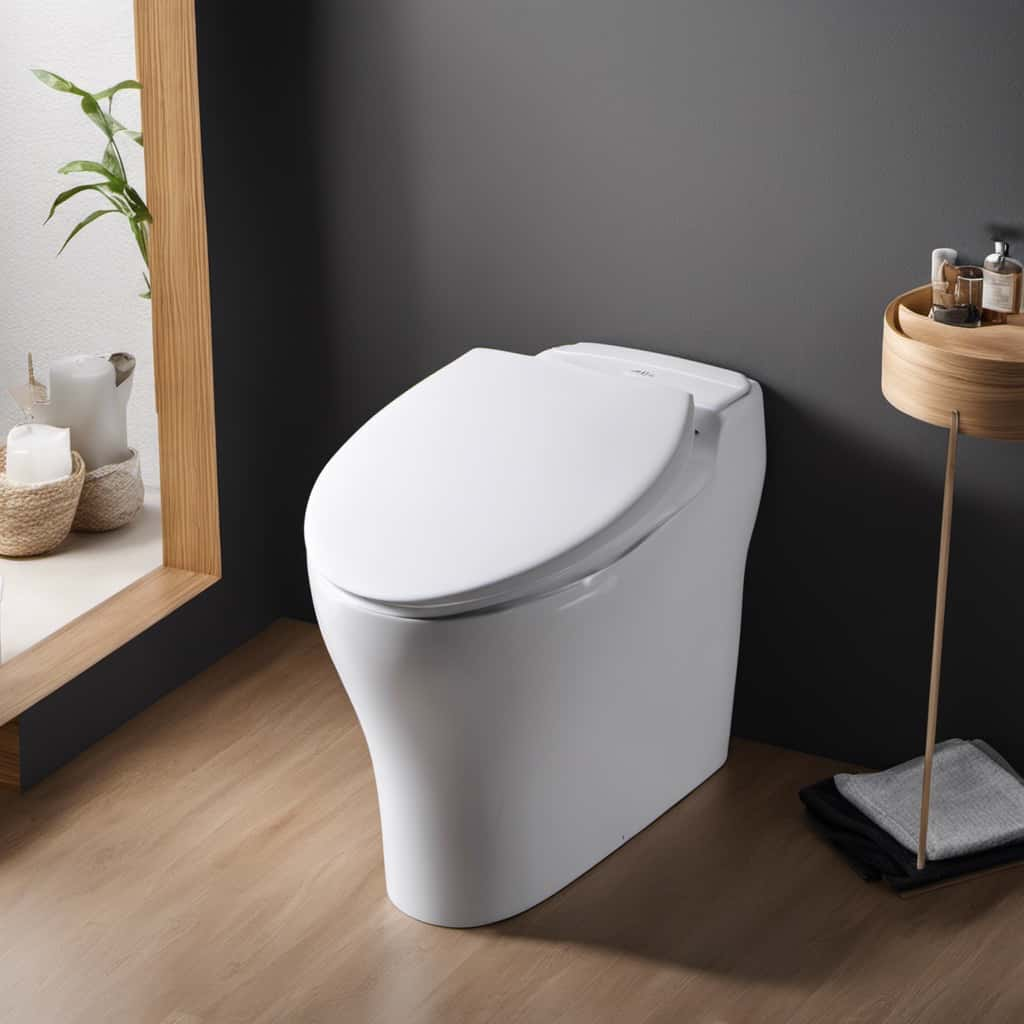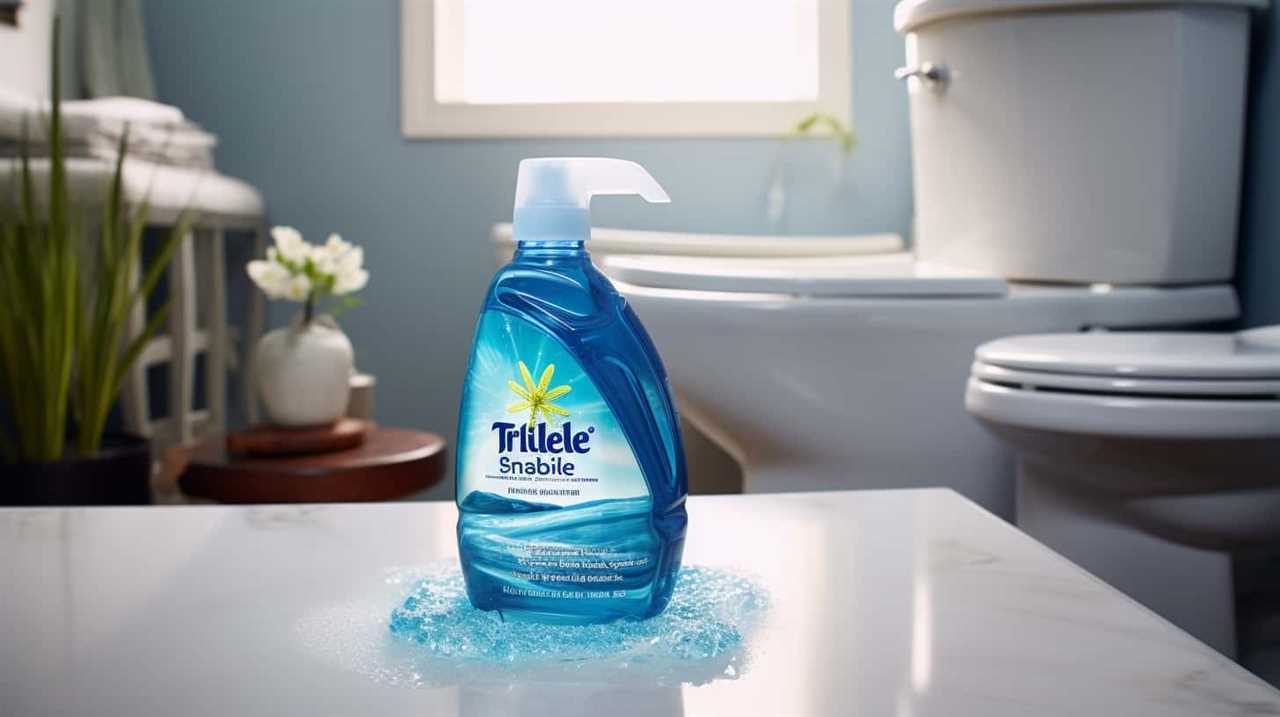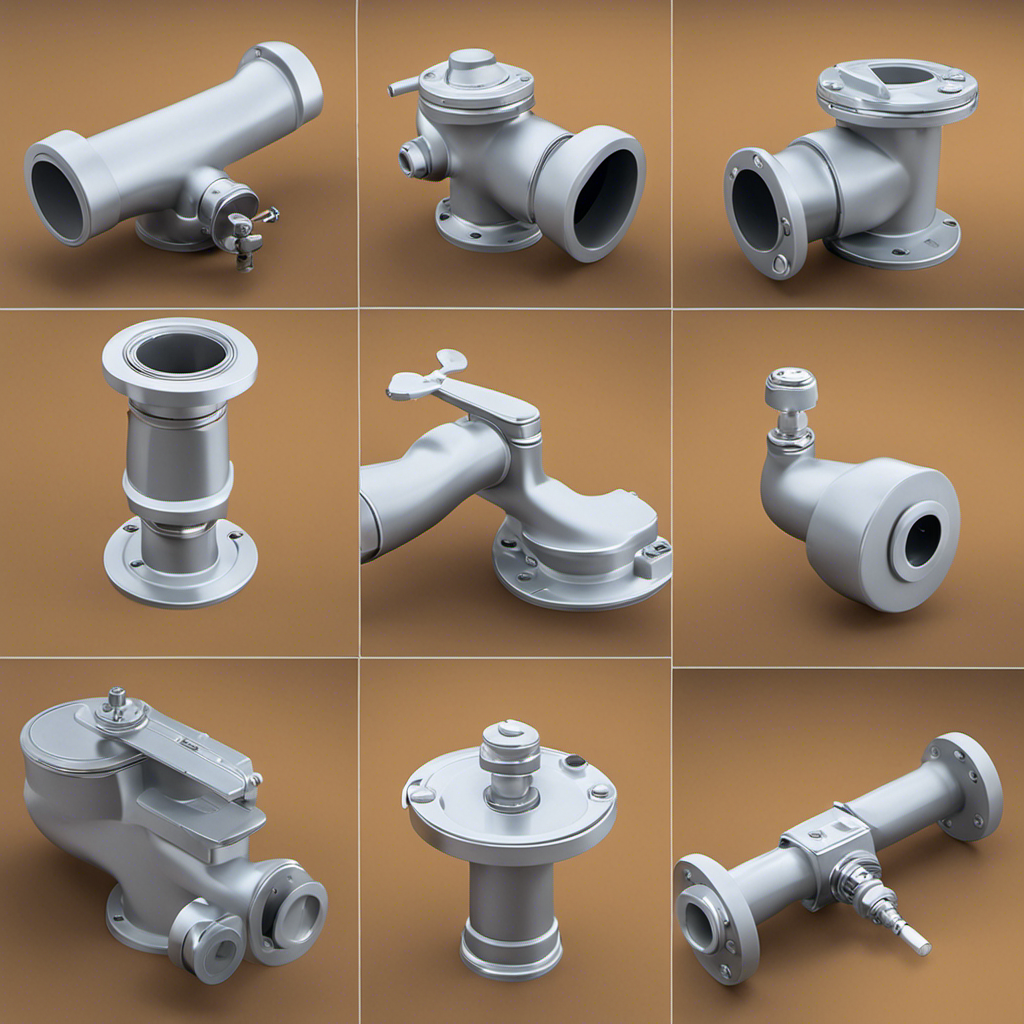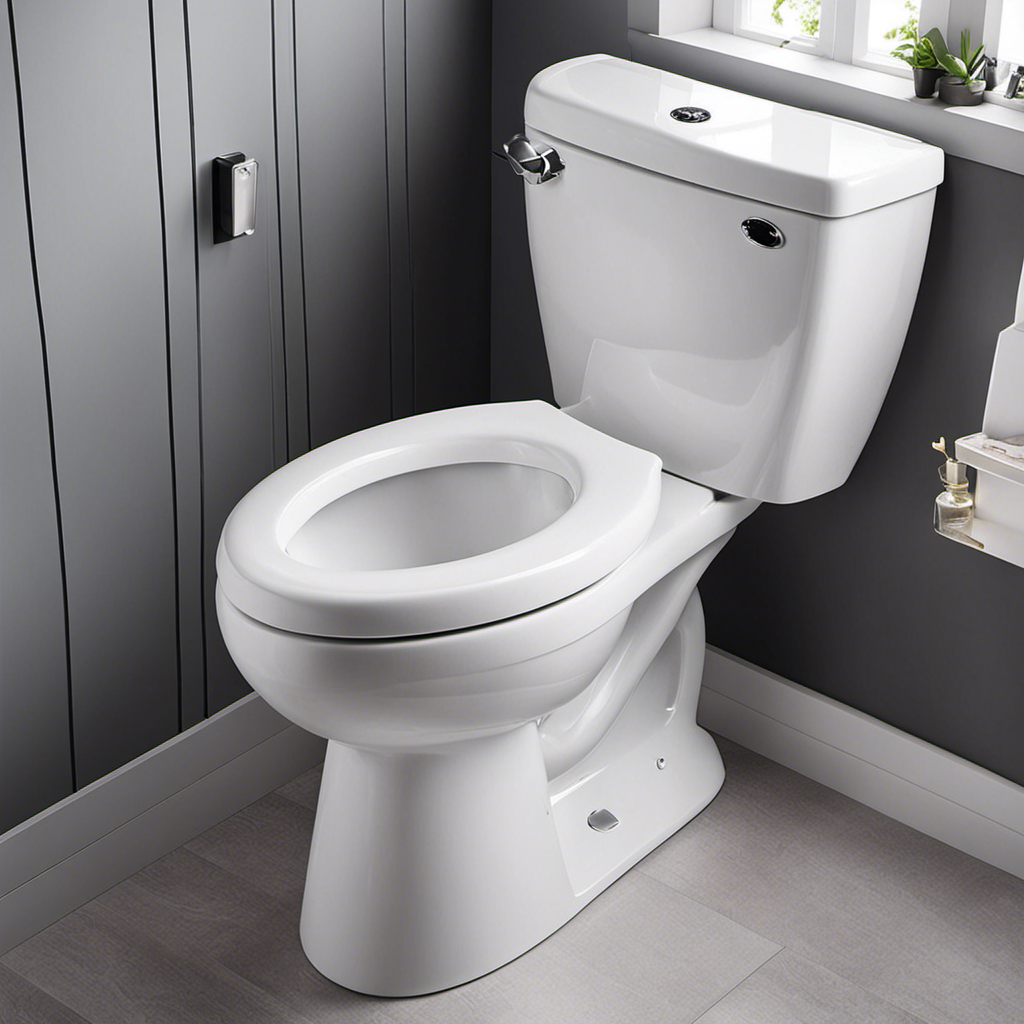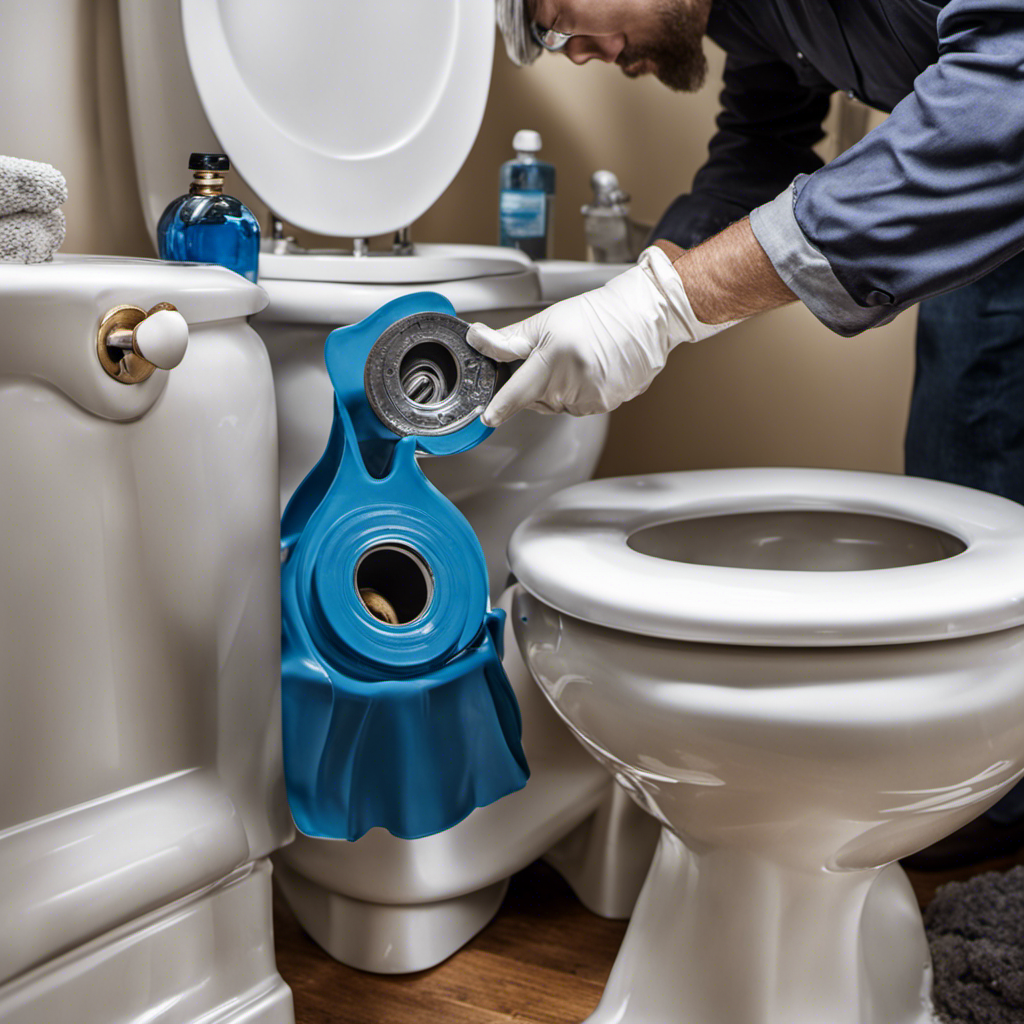I’ve had it happen to me before – the dreaded moment when you flush the toilet and instead of the water swiftly swirling away, it rises and then slowly drains. It’s a frustrating and inconvenient problem that many homeowners face.
In this article, we’ll explore the common causes of flushing issues, delve into the intricacies of toilet drainage systems, and discuss the signs of a clogged toilet. But fear not! We’ll also provide you with practical solutions to clear a partially blocked toilet and troubleshoot a weak flush.
Plus, we’ll share preventive measures to avoid future toilet drainage problems. So, let’s dive in and tackle this issue head-on!
Key Takeaways
- Clog in the pipes can cause the issue of toilet water rising and slowly draining.
- Faulty or worn-out fill valve and flush valve can also contribute to this problem.
- Low water pressure or insufficient water level in the tank can result in slow drainage.
- Regular maintenance and preventive measures such as cleaning jets, checking water level, and clearing clogs can help in avoiding this issue.
Common Causes of Flushing Issues
If your toilet is experiencing flushing issues, one of the common causes could be a clog in the pipes.
When the toilet water level rises and then slowly drains, it indicates a problem with the toilet flushing mechanism.
The flushing mechanism consists of several components, including the fill valve, flush valve, and flapper.
If any of these parts are faulty or worn out, it can affect the proper functioning of the toilet.
For instance, a worn-out flapper may not create a tight seal, causing water to slowly leak into the bowl.
Similarly, a malfunctioning fill valve may not allow enough water to enter the tank, resulting in a weak flush.
It is important to identify and fix these issues promptly to ensure proper toilet performance.
Understanding Toilet Drainage Systems
Understanding how toilet drainage systems work can help diagnose and fix issues with water flow. Here are four key elements to consider when it comes to toilet drainage maintenance and installation:
-
Gravity: Toilet drainage systems rely on the force of gravity to move waste and water down the drain. The toilet bowl is positioned higher than the main sewer line, allowing for efficient drainage.
-
Trapway: The trapway is a curved passage in the toilet bowl that prevents sewer gases from entering the bathroom while allowing waste and water to flow through. It must be clear of any obstructions for proper drainage.
-
Venting: Vent pipes are essential for toilet drainage systems as they allow air to enter the system, enabling smooth and efficient flow. A clogged or improperly installed vent can lead to slow drainage or even blockages.
-
Piping: The plumbing pipes that connect the toilet to the main sewer line must be properly sized and installed to ensure proper drainage. Any leaks or blockages can disrupt the flow and cause issues with water drainage.
Signs of a Clogged Toilet
To identify a clogged toilet, you’ll notice water backing up or overflowing from the bowl. This is a clear sign that there is an obstruction in the drain pipe. It could be caused by various things like excessive toilet paper, foreign objects, or even tree roots infiltrating the pipe.
When faced with a clogged toilet, it’s important to act quickly to prevent further damage and potential flooding. There are some DIY solutions you can try before calling a professional plumber. One option is to use a plunger to create pressure and dislodge the blockage. Another method is using a toilet auger, a flexible tool designed to reach and remove stubborn clogs.
Regular toilet maintenance, such as avoiding flushing non-flushable items, can also help prevent clogged toilets in the future.
How to Clear a Partially Blocked Toilet
When it comes to addressing a partially blocked toilet, it’s important to understand the causes of blockage, effective clearing techniques, and prevention tips.
Understanding the causes, such as excessive toilet paper or foreign objects, will help determine the appropriate course of action.
Clearing techniques, such as using a plunger or a toilet auger, can effectively remove the blockage.
Prevention tips like avoiding flushing non-flushable items can help minimize future incidents.
Causes of Blockage
If your toilet is experiencing water rising and slowly draining, one possible cause of this blockage could be a clog in the pipes. To prevent toilet blockage and troubleshoot flushing issues, consider the following:
-
Proper waste disposal: Avoid flushing items like sanitary napkins, diapers, or paper towels, as they can easily clog the pipes.
-
Regular maintenance: Schedule periodic inspections to identify and address any potential plumbing issues before they become major problems.
-
Water pressure check: Ensure that the water pressure in your toilet is appropriate, as low pressure can hinder the flushing process.
-
Plunger technique: If you encounter a clog, use a plunger in a firm and consistent manner, applying downward pressure to dislodge the blockage.
Clearing Techniques
Using a plunger is an effective way to clear a blockage in your pipes. When faced with a toilet that is not draining properly, it is important to quickly address the issue to prevent any further damage. Clearing obstructions can be done using simple DIY solutions.
First, ensure you have the right type of plunger—a cup-shaped one with a flange works best for toilets. Place the plunger over the drain hole and create a tight seal. Use a vigorous up-and-down motion to dislodge the blockage. Be patient and repeat the process if necessary.
If the plunger doesn’t work, try using a plumbing snake to manually remove the obstruction. Remember to always exercise caution and consult a professional if the problem persists.
Prevention Tips
One way to prevent pipe blockages is by regularly cleaning out your drains with a mixture of vinegar and baking soda. This simple, yet effective solution can help maintain the proper flow of water in your toilet and prevent any potential clogs.
In addition to regular drain cleaning, there are a few other important toilet maintenance tips to keep in mind:
-
Avoid flushing anything other than toilet paper down the toilet. Items such as wipes, feminine products, or cotton balls can cause blockages in the pipes.
-
Install a toilet paper holder that is sturdy and can securely hold the toilet paper. This will prevent excessive amounts of toilet paper from being flushed at once.
-
Check the water level in the toilet tank periodically. If the water level is too high, it may cause overflow and lead to blockages.
-
Invest in a plunger and learn how to use it properly. A plunger is a handy tool that can quickly and easily clear minor clogs.
Dealing With a Faulty Flush Valve
When it comes to dealing with a faulty flush valve, there are common issues that can arise and cause flushing problems. Understanding these common flush valve issues is crucial for troubleshooting and resolving any flushing problems that may occur.
In this discussion, we will explore the common flush valve issues and provide guidance on how to effectively troubleshoot and resolve flushing problems.
Common Flush Valve Issues
If your toilet is experiencing issues with water rising and draining slowly, a common culprit could be problems with the flush valve. The flush valve is responsible for releasing water from the tank into the bowl during the flushing process.
Here are some common flush valve issues to be aware of when troubleshooting toilet flushing problems:
-
Malfunctioning Flapper: The flapper is a rubber seal that opens and closes the flush valve. If it is worn out or not sealing properly, it can cause water to leak into the bowl, leading to slow draining.
-
Buildup of Mineral Deposits: Over time, mineral deposits can accumulate on the flush valve, causing it to become stuck or not function properly. Regular cleaning is necessary to prevent this issue.
-
Bent or Misaligned Flush Valve: If the flush valve is bent or misaligned, it can interfere with the proper flow of water, resulting in slow draining.
-
Damaged or Faulty Flush Valve: In some cases, the flush valve itself may be damaged or faulty, requiring replacement to resolve the issue.
By addressing these common flush valve issues, you can effectively troubleshoot and repair toilet flushing problems.
Now, let’s move on to the next section and explore further troubleshooting methods.
Troubleshooting Flushing Problems
When dealing with flushing problems in toilets, it’s important to troubleshoot the issue to identify the root cause. One common problem is when the water level in the toilet rises and drains slowly. This can be frustrating and inconvenient, but there are several potential causes for this issue. One possibility is water pressure issues. Insufficient water pressure can affect the flushing mechanism, preventing proper water flow and causing the water level to rise and drain slowly. To help you understand the potential causes and solutions for this problem, I have provided a table below:
| Potential Causes | Symptoms | Solutions |
|---|---|---|
| Low water pressure | Slow draining water | Check water pressure and adjust if necessary |
| Partially clogged drain | Rising water level | Use a plunger or a plumbing snake to clear the clog |
| Faulty flush valve | Inconsistent water flow | Replace the flush valve |
Troubleshooting a Weak Flush
To troubleshoot a weak flush, you can start by checking the water level in the tank. Here are the steps to follow:
-
Ensure that the water level is at the appropriate mark on the toilet tank. If it is too low, the flush may not have enough force to clear the bowl properly.
-
Check the water pressure in your home. Low water pressure can affect the flushing performance. If you suspect low pressure, you may need to consult a plumber to address the issue.
-
Clean the jets and flush holes under the rim of the toilet bowl. Over time, mineral deposits and debris can accumulate, obstructing the flow of water and weakening the flush.
-
Consider adjusting the flapper valve or replacing it if necessary. A worn-out or improperly adjusted flapper can cause water to leak from the tank, reducing the amount available for flushing.
Preventive Measures for Future Toilet Drainage Problems
To prevent future drainage problems, you should regularly clean the toilet bowl and remove any debris that could potentially obstruct the flow of water. Maintaining your toilet is an essential part of proper toilet maintenance. By following these simple plumbing tips, you can ensure that your toilet functions smoothly and efficiently.
One important aspect of toilet maintenance is to regularly check and clean the toilet bowl. This helps to prevent any buildup of mineral deposits or other debris that can impede the flow of water. Additionally, it is important to inspect the flushing mechanism to ensure it is working properly. This includes checking the flush valve, flapper, and refill tube for any signs of wear or damage.
In order to make the maintenance process easier, I have created a helpful table below that outlines the recommended frequency and tasks for maintaining your toilet:
| Frequency | Cleaning Tasks |
|---|---|
| Monthly | Clean the bowl |
| Annually | Inspect flushing mechanism |
| As needed | Remove any clogs or obstructions |
Conclusion
In conclusion, dealing with a clogged toilet can be a frustrating experience, but with the right knowledge and techniques, it can be resolved.
By understanding the common causes of flushing issues and how toilet drainage systems work, one can effectively troubleshoot and clear a partially blocked toilet.
Additionally, addressing faulty flush valves and weak flushes can further improve toilet functionality.
By implementing preventive measures, such as regular maintenance and proper use, future toilet drainage problems can be avoided.
Remember, just as water rises and slowly drains in a toilet, so too can our patience and determination rise in overcoming any challenge.
